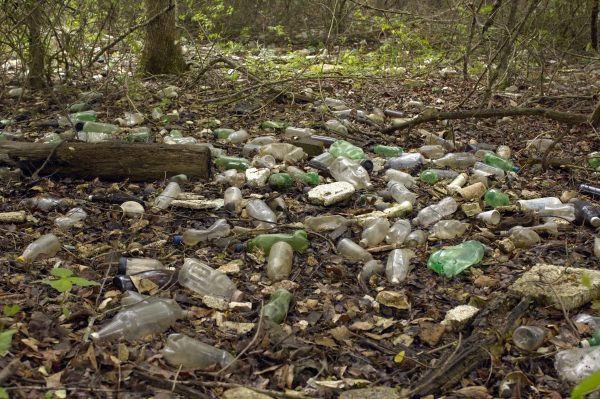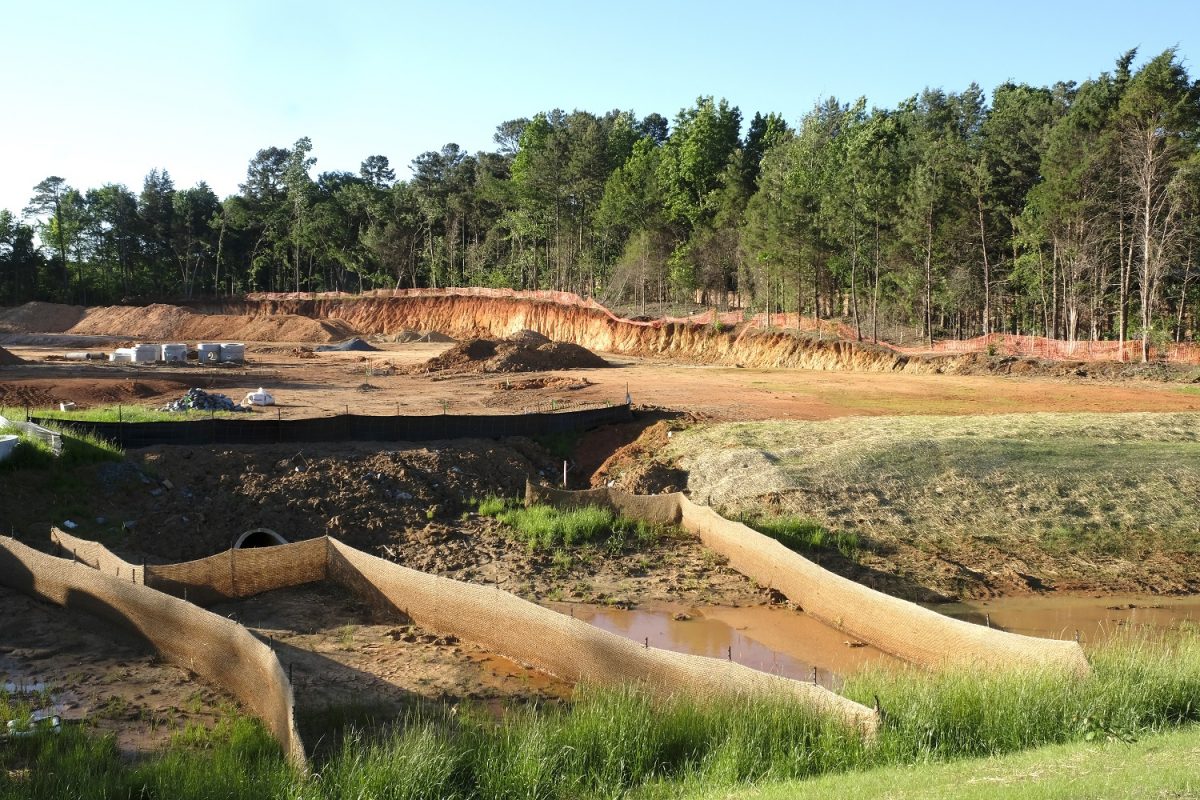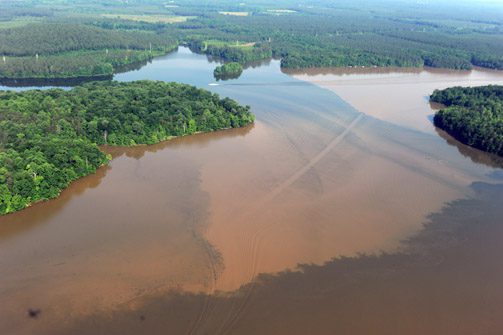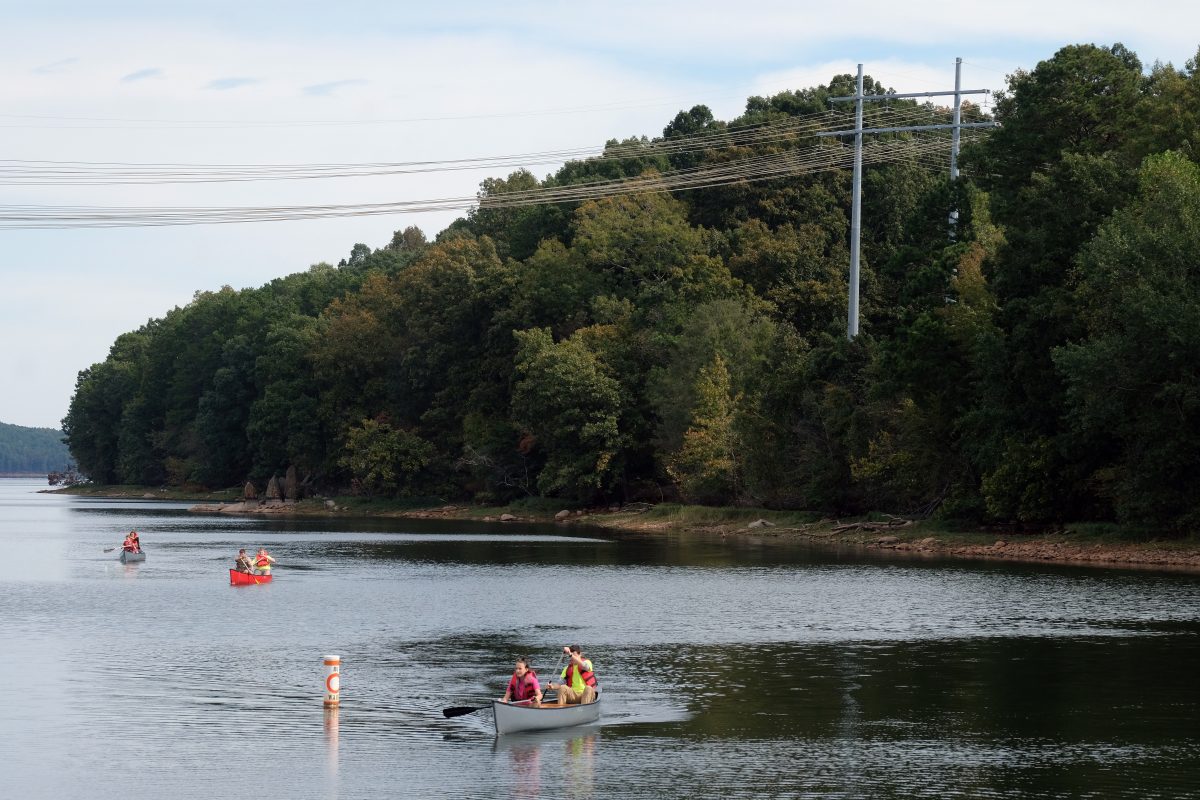The biggest environmental issues facing Charlotte share a common root

Air pollution, runoff and sediment in our waterways, disappearing open space and development chipping away at our tree canopy: Charlotte’s facing many environmental challenges with one common cause.
Growth.
About 18 percent of land in the city is considered “vacant,” and that number is shrinking as development roars ahead. The city recently changed its tree canopy goals, discarding the 50 percent coverage by 2050 standard, as age and construction consume more trees. And air pollution, largely driven by the region’s auto-dependent development patterns, remains a concern.
The side effects of growth are a regional problem, one that crosses city, county and state lines. As 2020 starts, we talked to six people with varying perspectives who all closely follow the region’s environmental challenges. We posed the question: “What’s the biggest environmental issue facing Charlotte?”
Their answers (edited for brevity and clarity) are below. We also posed the question to you on Twitter, where you can weigh in with your thoughts.
Here’s a question for you: What do you think is the biggest environmental challenge facing Charlotte right now? (Not global issues; or if you say a global issue, its local impact) pic.twitter.com/KeEJHc3wFj
— Ely Portillo (@ESPortillo) January 21, 2020
June Blotnick, executive director, Clean Air Carolina
While Charlotte is several hundred miles inland and doesn’t have to contend with rising sea levels, yearly hurricanes, and coastal flooding, climate change is still the biggest environmental challenge to our city. It’s also a major threat to public health and our economy.
According to the Fourth National Climate Assessment, released just over a year ago, “more frequent and intense extreme weather and climate-related events, as well as changes in average climate conditions, are expected to continue to damage infrastructure, ecosystems, and social systems that provide essential benefits to communities.”
Last summer’s extreme temperatures put outdoor workers, children, senior adults, the homeless and those without air conditioning at risk for heat stroke and other heat-related illnesses. During July there were 16 days where temperatures were at 90 degrees or above. If we are to protect those most at risk, we can start by establishing cooling centers for the homeless, air conditioners for families in need and targeted public health messaging for families and seniors.
For a city “under construction,” the business community must step up to protect outdoor workers during the summer. This might add to the cost of doing business, but so do costs associated with missed workdays and increases in health care premiums.
This is a long-term public health problem which isn’t going away in the foreseeable future.
As one of the fastest growing cities in the country, Charlotte is already struggling to keep pace with its infrastructure needs made worse by climate-related weather events including stormwater management, transportation improvements and stress on the power grid. The continued increased costs to local government will impact the growth of our local economy in the coming years.
Hotter summers also mean the likelihood of more air pollution. The Charlotte region is right on the line for meeting the federal standard for ground-level ozone pollution which is formed when heat and sunlight interact with pollution from traffic and power plants.
As we struggle with the issue of equity, or rather inequity, in the areas of affordable housing, economic opportunities and healthy food for neighborhoods across our city, Charlotte must also prioritize resiliency and adaptation strategies for those most vulnerable to impacts of climate change.
Shannon Binns, founder and director, Sustain Charlotte
Nearly all of Charlotte’s environmental problems — air pollution, climate pollution, water pollution, loss of tree canopy and loss of adjacent farmlands — are due to low-density, auto-centric urban sprawl, so I think it’s useful to think of that as our true environmental problem.
If we stop designing our city with the goal of moving cars and instead design it for moving people as efficiently as possible, we would dramatically reduce our negative impacts on our air, our climate, our waterways, our forests and our farmlands.
Our past and present impacts on all of these are severe, but the good news is that the most effective solution to all of these “environmental problems” is the same: changing our development pattern from inefficient auto-centric sprawl to efficient smart growth.
Elaine Powell, vice chair, Mecklenburg County Board of Commissioners

Land that was clear cut and prepared for construction of high-end houses in May 2017, on Highway 51 near Pineville. Photo: Nancy Pierce
In my opinion, the biggest environmental challenge for Mecklenburg County is protecting and preserving land that will help to protect water quality and water quantity. There are pieces of land that have high conservation value that we don’t own. Because we don’t own them, they are a threat to our water quality.
There are even pieces of land with very high conservation value in other counties that, if they are developed, will directly impact the drinking water for all 1 million people in Mecklenburg Counity. It is a regional issue, but it will directly impact Mecklenburg County.
We’re almost built out. Mecklenburg is so close to build-out that what happens on some of these pieces of land with high conservation value is very important. Loss of tree canopy, open space and green space all impact water quality.
Watershed protection is super-important. Everything is connected. If you work to protect water quality, you also protect air quality. The tree canopy is significant in cleaning the water and in filtering stormwater. The biggest threat, from what I’ve seen lately, is being able to acquire areas of high conservation value and really making sure we protect our drinking water.
Hermes Goudes, supervisor, Mecklenburg Soil and Water Conservation District
The greatest immediate concern I have is loss of green, tree and natural spaces and buffers on all new or redeveloped public or private sites — urban or suburban or rural. Similar construction standards for high-density development are being applied universally everywhere. Ordinances and general building practices are changed to maximize units or building footprints for the convenience of developers and remote investors.

Sedimentation in the Yadkin River. Photo: Nancy Pierce
I also am wary of the continued polarization of environmental/climate issues, and the way they are interwoven in social needs and our local and state building policies now. New construction is mostly luxury infill. The only affordable housing we have is older housing throughout the city — that happens to have more tree and natural spaces from older standards. The vast majority of green space is in older affordable or more modest areas, not just wealthy ones, and that will diminish as properties are redeveloped to new high-density standards the industry has been pushing for a very long time.
I do believe local and state policies in the South are being influenced by industry, and even other cities elsewhere that may be overstressed. We have a warm climate and healthy natural resources here, including soil and water. I think we can do much more to cope long term if we give a lot more space for environmental buffers on all sites to do their natural thing.
Simple prevention is always less expensive than complicated fixes.
Brandon Jones, Catawba Riverkeeper
The largest environmental challenge facing Charlotte is its rapid population growth. As more people move to the area, pollution increases and ecological services are strained. For the Catawba River, this problem manifests as increases in runoff, sewage and water use.
When it rains an inch on a 1-acre parking lot, almost 30,000 gallons of water run off. This water carries whatever was on the asphalt: Trash, auto fluids, brake dust, and cigarettes are all washed unfiltered into the nearest stream. Additionally, the volume and speed of this runoff cause flooding and stream erosion. As previously forested areas are developed for new buildings and parking, this problem will intensify.
When you flush, waste goes into the sewer system. Charlotte Water maintains over 4,000 miles of sewer lines. Each year ruptures and clogs in the aging infrastructure send thousands of gallons of sewage into Catawba basin creeks (Please do not flush wet wipes). More people generate more waste and increase the chances of clogs.
Each day, about 120 million gallons of water are withdrawn from the Catawba for municipal water. This is the water we use for drinking, washing, flushing and industry. Another 123 million gallons of water are withdrawn from the river for power generation. If you get a bill from Charlotte Water or Duke Energy, you are using Catawba water.
These numbers grow proportionately with the region’s population and are expected to double by 2065. While the river generally has the capacity to provide this volume, it makes us less resilient to drought.
Chuck Cole, executive director, Trees Charlotte
Of course it’s finding more places for trees, maintaining a clean, sustainable water supply, controlling emissions to the air to keep air quality healthy, controlling development and conserving land. All these are important!
The key issues for me are education, engagement from citizens, time, the ability people have to adapt and use of current data. Charlotte is growing super-fast and demands for healthy living conditions are bearing down on our fragile environment. Technology controls the pace of growth, but unfortunately, Mother Nature goes at her own pace!

The Yadkin River, near Badin. Photo: Nancy Pierce
Continued environmental education on a regular basis helps people understand challenges that affect their lives. Engagement helps grow the environment and create a personal relationship with it.
We must use current, relevant data. Data from two years ago will not give us the ability to affect change for sustainability. We will always be catching up.
But people are amazing adapters. They can adapt to most situations, including an unhealthy environment. So if we’ve adapted, what’s the need to be concerned?
Sustaining a healthy environment, regardless of the area, should be a top concern for everyone. I believe it is, but so many “other issues” become top-of-mind as soon as the wind changes direction. How do we make our environment something that’s as important as the smartphones we tweet with? If I were to say we’re losing 100,000 smartphone connections in Charlotte each year, you would see an uproar like no other! Now, if I told you it would take 30 years to regrow those connections, you would move somewhere else.
History, experience and research tell us we thrive in green spaces full of life. Having enough time to develop a healthy environment is essential. It takes time! Yet mature trees are being removed at a brisk pace.
Remember, replacing a mature tree takes years!